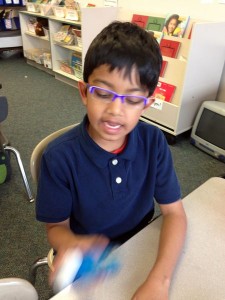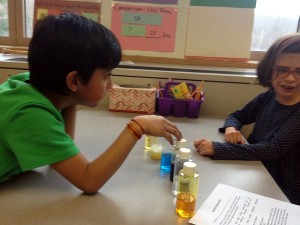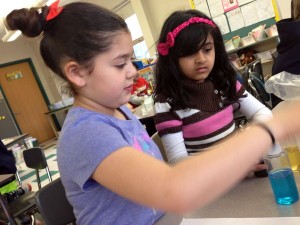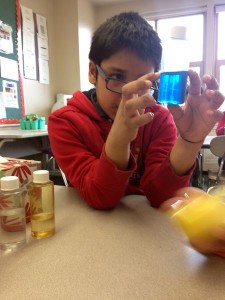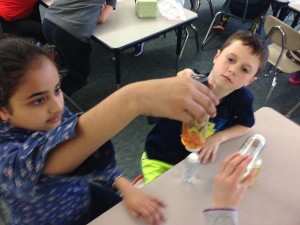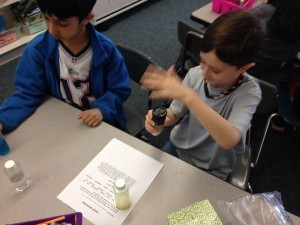Posted by kavery508 | Posted in Uncategorized | Posted on April 13, 2015
What a blast! Literacy Night was an engaging, noisy, joyful celebration. Kudos to our class authors who read their work to an audience. And thank you to volunteers who made the night a success!
 This week we explore Author’s Message with the purpose of developing critical thinking skills at a deeper level. We will learn common Themes from children’s literature (lessons like Believe in yourself; Always tell the truth; etc.) and apply them using fiction texts. Then we will learn to read closely and find evidence from the text to support our claims, and compare themes within and among texts. When your child uses a piece of fiction for reading homework, ask him/her to think about the themes that emerge over several pages or chapters of a book. And Scholastic has some great ideas on finding themes in books, movies, and songs at home: http://www.scholastic.com/teachers/top_teaching/2011/02/helping-students-grasp-themes-in-literature
This week we explore Author’s Message with the purpose of developing critical thinking skills at a deeper level. We will learn common Themes from children’s literature (lessons like Believe in yourself; Always tell the truth; etc.) and apply them using fiction texts. Then we will learn to read closely and find evidence from the text to support our claims, and compare themes within and among texts. When your child uses a piece of fiction for reading homework, ask him/her to think about the themes that emerge over several pages or chapters of a book. And Scholastic has some great ideas on finding themes in books, movies, and songs at home: http://www.scholastic.com/teachers/top_teaching/2011/02/helping-students-grasp-themes-in-literature
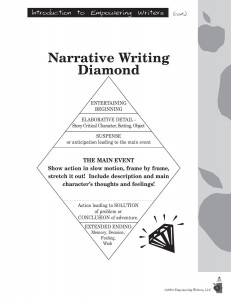 Our personal narrative writing continues to grow as we focus on stretching out one moment in time with details, including red flags, observations, and actions. Take a look at the video below (from sparkbag at Youtube.com). Notice how the ride is made up of moment-to-moment actions and observations. A good narrative would sound something like this: We slowly inched our way up the hill. It was impossible to miss the CLANK CLANK CLANK of the heavy metal chain as we neared the top of the track. Looking down I noticed the people and cars, no bigger than toys. Suddenly, we jerked to the left, and… Try finishing the story yourselves at home! Youtube abounds with such thrill ride videos–try them out!
Our personal narrative writing continues to grow as we focus on stretching out one moment in time with details, including red flags, observations, and actions. Take a look at the video below (from sparkbag at Youtube.com). Notice how the ride is made up of moment-to-moment actions and observations. A good narrative would sound something like this: We slowly inched our way up the hill. It was impossible to miss the CLANK CLANK CLANK of the heavy metal chain as we neared the top of the track. Looking down I noticed the people and cars, no bigger than toys. Suddenly, we jerked to the left, and… Try finishing the story yourselves at home! Youtube abounds with such thrill ride videos–try them out!
 The focus of this week’s math is estimating by rounding up/down and using estimation as a way to check the reasonableness of sums/differences. These are VERY important skills that require students to develop and apply number sense as they think critically about math. For a detailed and illustrated explanation, see the MIF Student Book 2B, pp. 28-35 (follow the link in the Parent Resources section of this blog and enter your PowerSchool credentials).
The focus of this week’s math is estimating by rounding up/down and using estimation as a way to check the reasonableness of sums/differences. These are VERY important skills that require students to develop and apply number sense as they think critically about math. For a detailed and illustrated explanation, see the MIF Student Book 2B, pp. 28-35 (follow the link in the Parent Resources section of this blog and enter your PowerSchool credentials).
At first, students just need to learn and practice the basic skill of rounding to the nearest 10. Next comes the smart stuff. To check that a sum/difference is reasonable, they will learn to use estimates (sometimes called Ballpark Estimates). Take this example: When solving 67 + 44, I can estimate the sum as 110 (67 rounds up to 70, plus 44 which rounds down to 40). My actual answer therefore needs to be close to 110 (less than a difference of 5). If I get an answer of 111, my estimate shows that my answer is reasonable and I likely have it correct. However if my answer is, say, 121 then I better check my work because that answer is too large to be correct. The beauty of using estimates is that they push kids to think of the numbers involved by rounding them into 10s and 100s, which they can ‘hold in their heads’ much easier than numbers like 67 and 44. This week’s homework is all about estimating; contact me if I can clarify!
 Our Social Studies focus this term is on understanding information that timelines present. We have been evaluating timelines and analyzing various formats to understand how history is presented graphically. Having created personal lists of events at school this year, students will explore how to best show their information for the engagement and ease of the reader. Softschools.com has some good examples of online and interactive timelines, and there are many others you can find with a simple Web search: http://www.softschools.com/timelines/rosa_parks/timeline_7/
Our Social Studies focus this term is on understanding information that timelines present. We have been evaluating timelines and analyzing various formats to understand how history is presented graphically. Having created personal lists of events at school this year, students will explore how to best show their information for the engagement and ease of the reader. Softschools.com has some good examples of online and interactive timelines, and there are many others you can find with a simple Web search: http://www.softschools.com/timelines/rosa_parks/timeline_7/
 We continue to learn science content and inquiry skills by seeking to understand liquids and their properties. Having learned to identify several liquids in bottles by their observable properties, we will experiment with liquids this week and how they behave when applied to various surfaces such as plastic and paper in order to differentiate and identify them based on their interactions.
We continue to learn science content and inquiry skills by seeking to understand liquids and their properties. Having learned to identify several liquids in bottles by their observable properties, we will experiment with liquids this week and how they behave when applied to various surfaces such as plastic and paper in order to differentiate and identify them based on their interactions.

